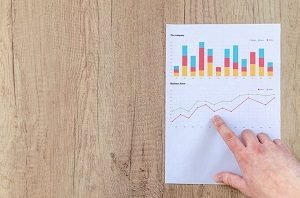 Let’s face it, planning for a project is hard. There are requirements, people, resources, and ideas that must be accounted for. How can all these variables be kept straight? Charting and planning may seem daunting, but they are necessary for a successful project. Incorporating software that utilizes Gantt charts is helpful because these charts help observe and manage a project.
Let’s face it, planning for a project is hard. There are requirements, people, resources, and ideas that must be accounted for. How can all these variables be kept straight? Charting and planning may seem daunting, but they are necessary for a successful project. Incorporating software that utilizes Gantt charts is helpful because these charts help observe and manage a project.
Why Gantt Charts?
Projects are complicated, and it is frustrating when information is not readily available to all team members or tasks are not completed at appropriate times. With Gantt charts, these frustrations can be eliminated. In addition to observing a project, Gantt charts are helpful when scheduling. They also enable a user to visualize the duration of the project, prioritize tasks, and determine and keep track of resources.
Gantt is not like a spreadsheet because it is so versatile; the program integrates with any existing tools that are used, offers updates in real-time, and helps locate easy solutions for the unexpected problems.
How to Get Started
Know the Project
Before using Gantt, it is vital to know the details of the project to enable Gantt charts to work efficiently. When you’re planning, gather all the details to get started:
- create each task and step,
- figure out the timeline of each step,
- determine resources and resource allocation.
- prioritize tasks and their sequences.
Start the Chart
After collecting and sorting the necessary information, it is time to create the project’s chart. The software will create the chart as tasks are added; it is that simple.
After adding the tasks, the user will have the ability to designate tasks as milestones; this feature can be used for identifying meeting times, planning efforts, and task deadlines. The chart can color-code valuable information, as well.
Sharing with Team Members
A Gantt chart can be easily shared with the team members, and they can freely cooperate with others on a chart. Individual tasks or the whole project plan can be emailed to team members, and they can collaborate on the chart by commenting and adding files in real-time.
Benefits
A Gantt chart can bring many benefits to a project, and they will help a project run smoothly and efficiently. Planning sufficiently stops many of the problems that accompany disorganization. Through a Gantt chart, a user can:
- keep track of details that would usually be lost in the hustle and bustle of a project;
- quickly alter the project plan during and between tasks;
- quickly identify and locate problems;
- monitor the progress of the project and team members;
- keep simplified to-do lists.
Conclusion
Completing a project does not have to be difficult. Through the use of Gantt charts, managing and creating something can be as simple as inputting information into a software program and watching it flourish. This overlooked and straightforward method will help projects be more effective and enjoyable to manage. The collaborative nature of Gantt charts will even encourage team members and team building, which will help the project be completed with less stress and greater enthusiasm.